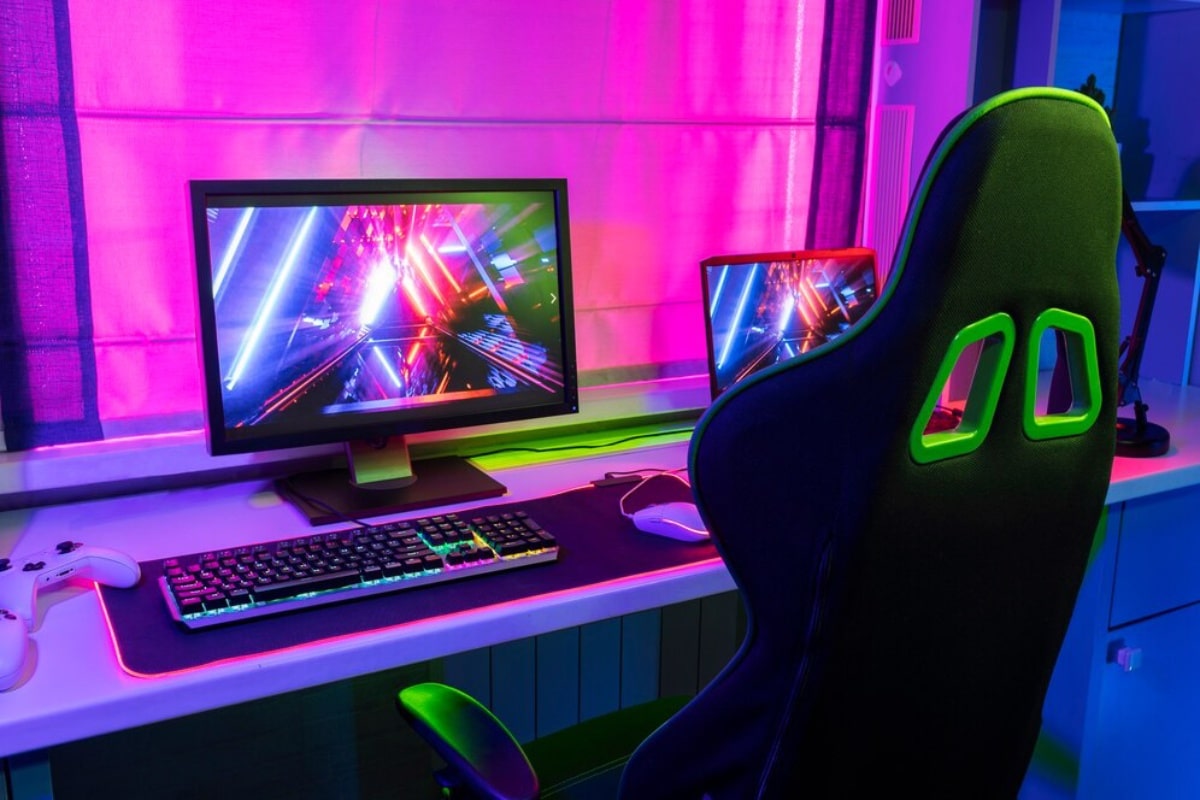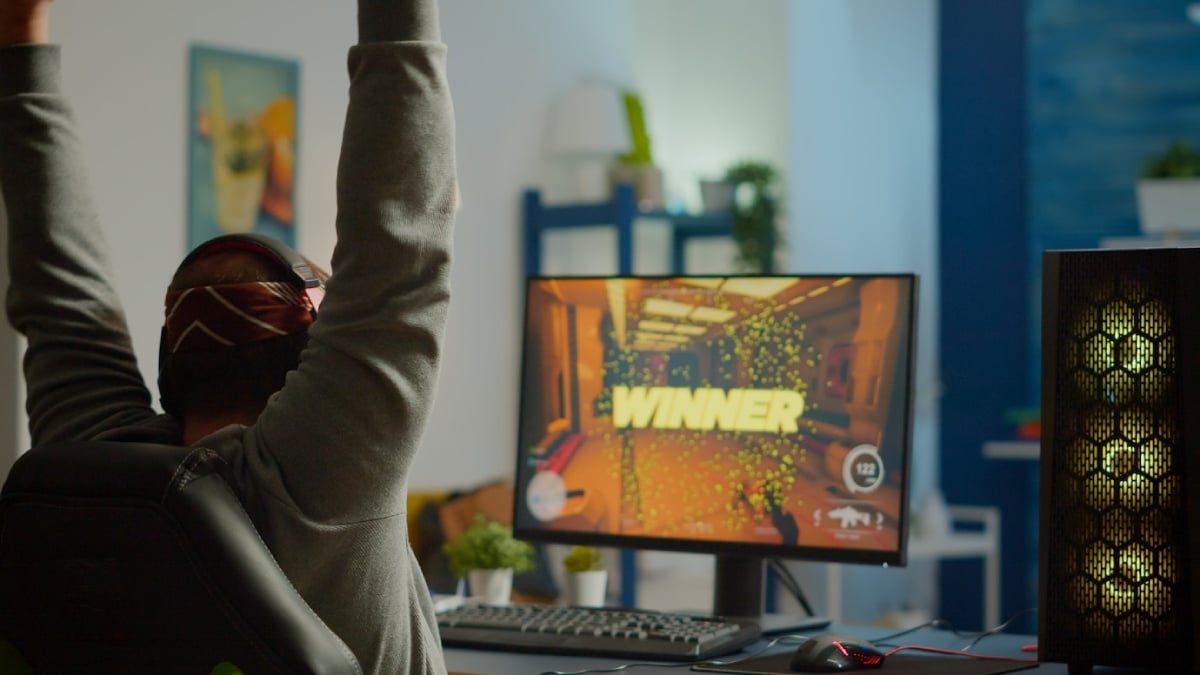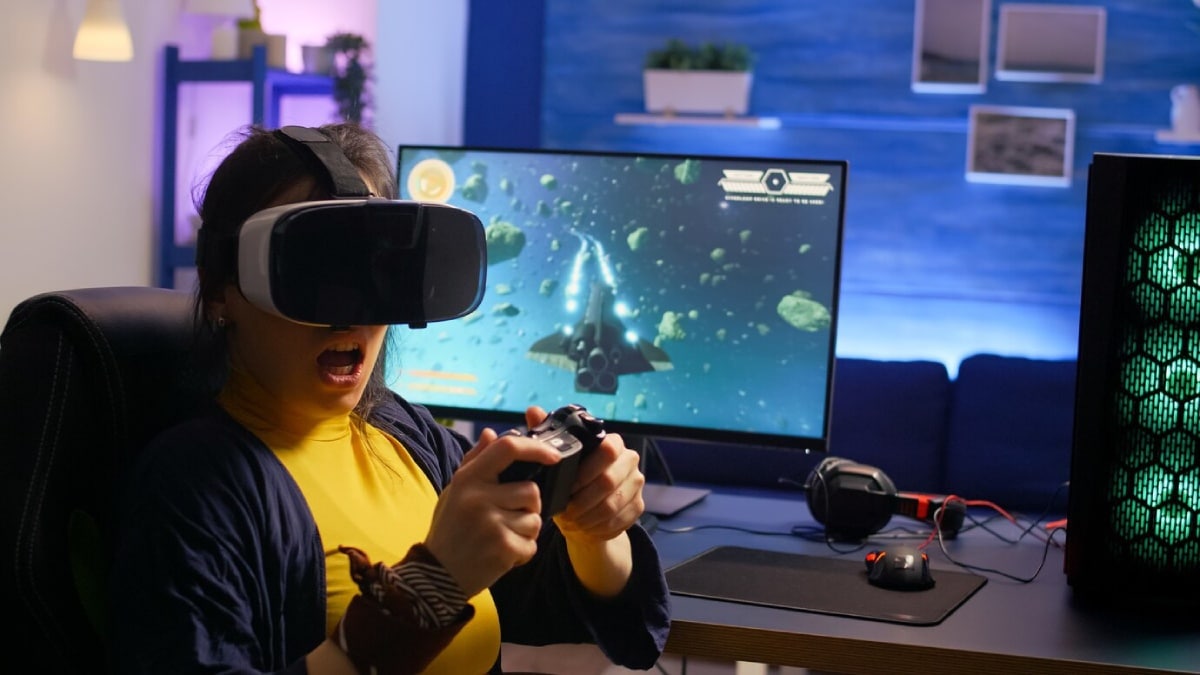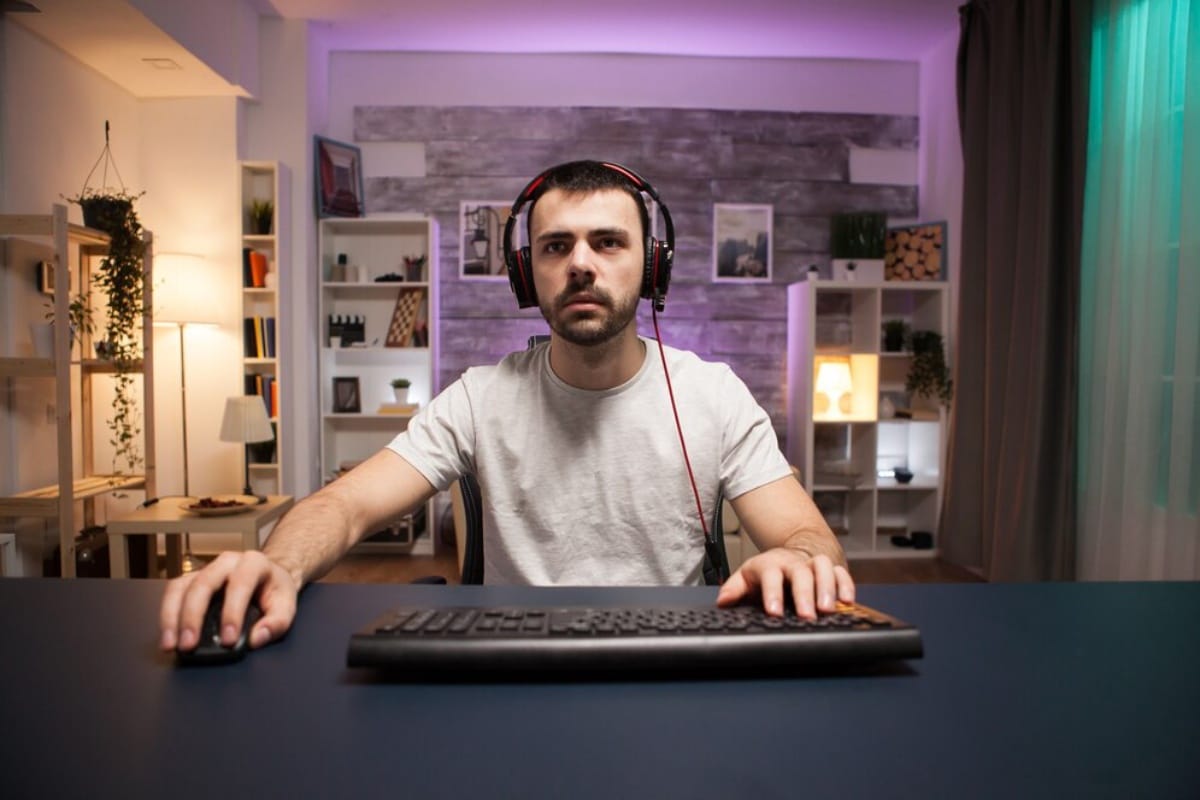
How to Set Up a Perfect Gaming Posture
You’ve probably heard someone say, “It’s just sitting – how bad can it be?” But if you’ve ever walked away from a gaming session with an aching neck or a sore lower back, you’ll know the answer: pretty bad.
Long hours in front of a screen, intense focus, and poor posture can lead to real issues, from minor discomfort to more serious gaming-related injuries. The good news? A few smart changes to your setup and daily habits can completely transform how your body feels after a session.
In this guide, we’re exploring gaming posture tips that are simple to implement but make a world of difference. Whether you’re a casual console player or a serious esports competitor, an ergonomic gaming setup can help you stay comfortable, play longer, and—most importantly—avoid long-term health problems.
Let’s make your gaming station work for you, not against you.
Why Posture Matters More Than You Think

The Hidden Toll of Poor Gaming Posture
It starts with a slight slouch. Then your neck cranes forward a bit. Before you know it, you’ve been hunched over like a prawn for hours.
Poor posture might seem harmless in the moment, but over time, it can cause:
- Chronic neck and back pain
- Shoulder and wrist strain
- Reduced circulation
- Eye strain and fatigue
- Repetitive strain injuries like gamer’s thumb or carpal tunnel syndrome
A study by the British Chiropractic Association found that over 35% of young adults reported back pain linked to screen time, much of it due to prolonged sitting with bad posture.
Gaming should be fun, not painful. That’s where a smart ergonomic setup steps in.
Essential Elements of an Ergonomic Gaming Setup
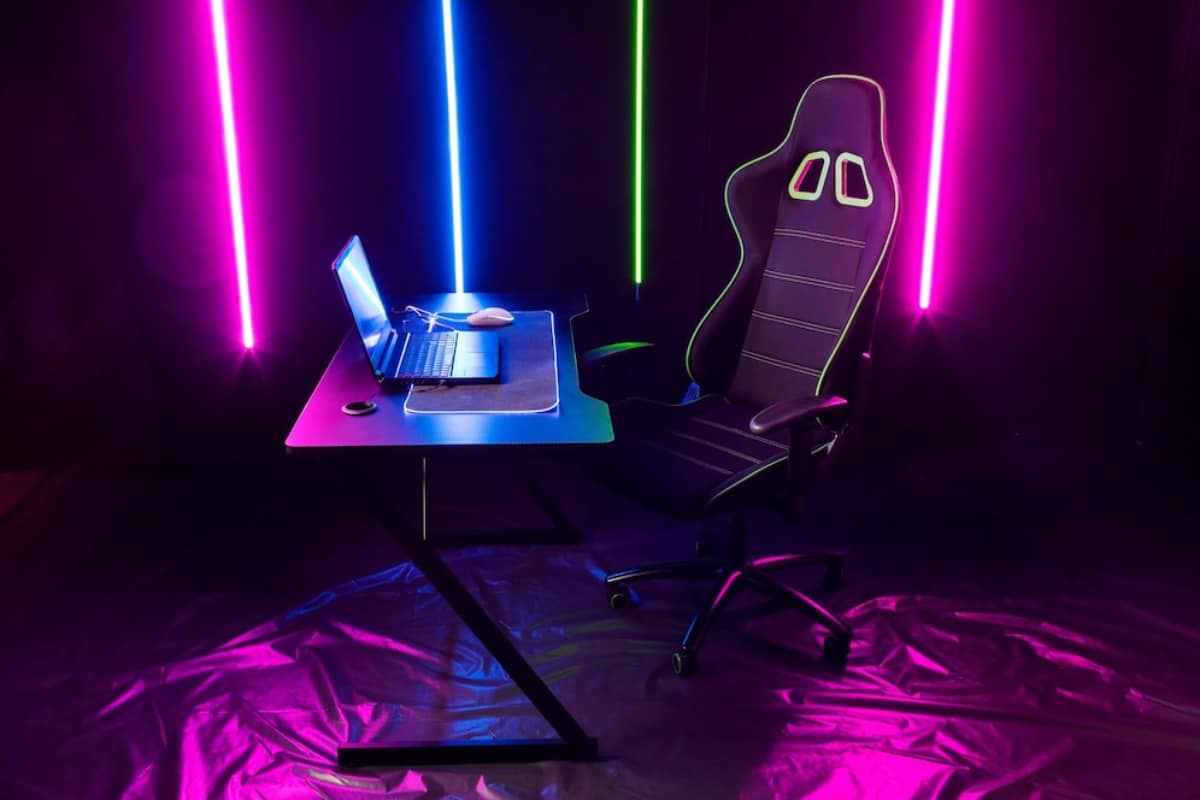
You don’t need a NASA-level cockpit to get posture right. But a few key adjustments to your environment can make a massive difference.
1. Your Chair: The Throne That Matters
Your chair is the base of your entire posture. Here’s what to look for:
- Height adjustability so your feet rest flat on the floor
- Lumbar support that fits the natural curve of your spine
- Armrests to prevent shoulder strain
- Recline feature so you can lean slightly (100°–110° is ideal)
- Padded seat with enough depth to support your thighs
Tip: If your chair doesn’t offer lumbar support, use a cushion or rolled-up towel behind your lower back.
2. Desk and Monitor Position: Eye-Level is Key
A poor monitor setup often causes neck strain and forward-leaning posture.
- Monitor height: The top third of your screen should be at eye level
- Distance: About an arm’s length from your face
- Angle: Tilt it slightly upwards (10°–20°) to match your eye line
- Dual monitors: Centre your most-used screen directly in front of you
This reduces neck twisting and stops you from craning forward like a meerkat.
3. Keyboard and Mouse Placement: Keep It Neutral
Avoid reaching out or tensing up. Instead, aim for:
- Elbows at 90 degrees and close to your sides
- Wrists in a neutral position (not bent up or down)
- Keyboard and mouse on the same surface
- Mouse pad with wrist support (if needed)
Imagine your arms resting gently, like floating in water, relaxed and aligned.
4. Feet and Legs: Don’t Let Them Dangle
Your lower body’s posture is just as important as your upper body. Make sure to:
- Keep feet flat on the ground or a footrest
- Avoid crossing your legs
- Sit with your thighs parallel to the floor
- Don’t tuck your feet under the chair (common but bad for your knees)
Good leg positioning improves circulation and reduces fatigue.
5. Lighting and Screen Glare: Protect Your Eyes
Posture isn’t just about your spine — your eyes play a big part too.
- Reduce glare by angling screens away from direct light
- Use ambient lighting to prevent eye strain
- Position screens so natural light doesn’t shine directly on them
- Apply blue light filters to reduce fatigue during long sessions
Follow the 20-20-20 rule: every 20 minutes, look at something 20 feet away for 20 seconds. Your eyes will thank you.
Posture Tips During Gameplay

Even with a perfect setup, how you use it matters. Here are gaming posture tips you can practise mid-session.
Stay Aware of Your Spine
Do regular posture checks:
- Is your back straight?
- Are your shoulders relaxed?
- Are your elbows close to your sides?
If not, reset. It only takes a second and pays off in the long run.
Take Breaks — Seriously
Micro-breaks are your secret weapon. Every 30–45 minutes:
- Stand up and stretch
- Walk around for a minute or two
- Do a few shoulder rolls or neck tilts
A standing stretch can undo hours of compression on your spine.
Switch Positions Strategically
If you’re stuck in the same position for too long, even the best chair won’t help.
- Lean back occasionally
- Recline slightly to redistribute pressure
- Shift your weight between your hips
Small changes = significant relief.
Stretching and Strengthening: Build a Gamer-Ready Body
You don’t need a complete workout routine, but a few movements can work wonders.
Daily Stretching for Gamers
Focus on areas that tighten from sitting:
- Neck tilts and rotations
- Shoulder rolls
- Spinal twists (seated or standing)
- Hamstring stretches
- Wrist and finger stretches
Even five minutes a day helps maintain flexibility and posture.
Strengthen Core and Back Muscles
Strong muscles support better posture. Try:
- Planks
- Supermans
- Wall sits
- Bridge lifts
These target the core, which is your body’s natural stabiliser.
Real-World Scenarios: Spot the Mistakes
Let’s take two typical gamer setups and break them down.
Scenario A: The Couch Contortionist
- Slouched into a sofa
- Laptop on the coffee table
- Leaning forward, elbows unsupported
Result: Neck pain, wrist tension, backache
Fix: Use a laptop riser, external keyboard and mouse, and sit in an upright chair.
Scenario B: The Desk Warrior (But Not Quite)
- Decent gaming chair
- Monitor too low
- Keyboard on slide-out tray is too far forward
Result: Forward neck posture, shoulder fatigue
Fix: Raise the monitor and keep the keyboard and mouse closer to your body
It’s all about those minor tweaks that align your body with your tech.
Gaming Without Pain Is Possible
When you consider all the time we spend gaming, it only makes sense to make it comfortable and safe. An ergonomic gaming setup isn’t a luxury anymore; it’s a must-have to avoid gaming injuries and protect your long-term health.
And no, you don’t need to buy premium equipment to make improvements. Many fixes — like adjusting monitor height, adding lumbar support, or stretching daily — cost little to nothing but have a huge impact.
Conclusion: Play Smart, Sit Smarter
Gaming should be a joy, not a strain. With the proper setup and daily habits, you can enjoy longer, more comfortable sessions while protecting your body from unnecessary stress and injury.
To recap:
- Choose an ergonomic chair and adjust it properly
- Keep your monitor at eye level
- Position your keyboard and mouse for relaxed posture
- Take regular breaks and stretch daily
- Stay mindful of your posture throughout the session
A good gaming posture isn’t just about looking like a pro — it’s about feeling good while you play and staying healthy outside the game.
